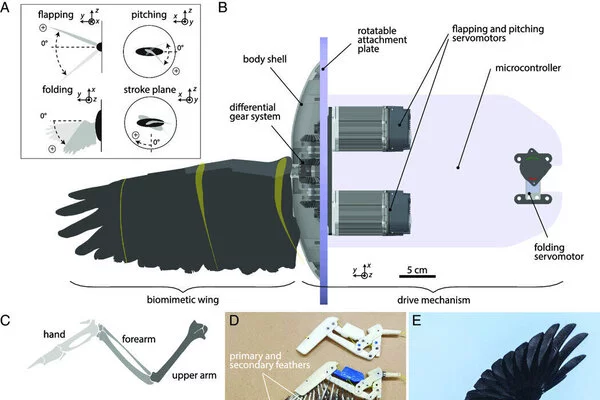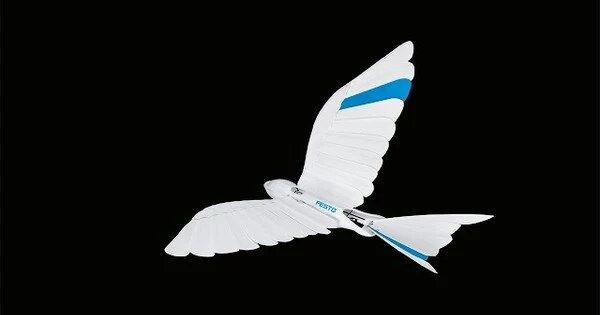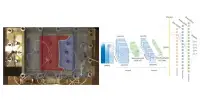Feathered robotic wings are a new technology that aims to make drones more efficient and maneuverable by mimicking the flapping motion of birds’ wings. These wings are designed to be lightweight and flexible, allowing them to move in a more natural way and potentially improving the aerodynamics of the drone. The use of feathers on the wings also allows for a greater range of movement, which can enhance the drone’s ability to fly in various conditions and terrains. However, it is still in the research phase, and more research is needed before it can be implemented in commercial drones.
According to a recent study led by Lund University in Sweden, birds fly more efficiently by folding their wings during the upstroke. The findings could imply that wing-folding is the next step in improving the propellant and aerodynamic efficiency of flapping drones.
Even the ancestors of birds, the extinct bird-like dinosaurs, benefited from folding their wings during the upstroke as they evolved into active flight. Birds are the largest and most efficient flying animals alive today. This makes them particularly appealing as a source of inspiration for drone development. However, determining the best flapping strategy necessitates aerodynamic studies of various flapping strategies. As a result, a Swedish-Swiss research team created a robotic wing capable of flapping like a bird and beyond.
We have built a robot wing that can flap more like a bird than previous robots, but also flap in way that birds cannot do. By measuring the performance of the wing in our wind tunnel, we have studied how different ways of achieving the wing upstroke affect force and energy in flight.
Christoffer Johansson
“We have built a robot wing that can flap more like a bird than previous robots, but also flap in way that birds cannot do. By measuring the performance of the wing in our wind tunnel, we have studied how different ways of achieving the wing upstroke affect force and energy in flight,” says Christoffer Johansson, biology researcher at Lund University.
Previous studies have shown that birds flap their wings more horizontally when flying slowly. The new study shows that the birds probably do it, even though it requires more energy because it is easier to create sufficiently large forces to stay aloft and propel themselves. This is something drones can emulate to increase the range of speeds they can fly at.

“The new robotic wing can be used to answer questions about bird flight that would be impossible simply by observing flying birds. Research into the flight ability to live birds is limited to the flapping movement that the bird actually uses,” explains Christofer Johnsson.
The study explains why birds flap in the manner that they do by determining which movement patterns generate the most force and are the most efficient. The findings can also be applied to other areas of research, such as a better understanding how climate change affects bird migration and access to food. There are numerous potential applications for drones where these insights can be put to use. One application could be the use of drones to deliver goods.
“Flapping drones could be used for deliveries, but they must be efficient and capable of lifting additional weight. The movement of the wings is critical for performance, so our research could be useful here” Christoffer Johansson concludes.
















